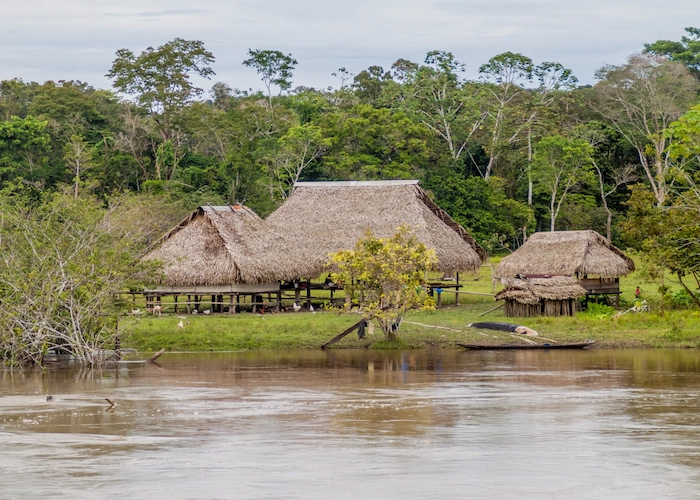This a set of tool is complementary to the BCR Standard and, provide more details and clarity for users on the existing provisions and procedures to ensure additionality, avoid double counting, manage uncertainty, MRV, sustainable development safeguards (SDSs), and risk and permanence, as well as in depth explanation of methodological development and approval.

Compliance with the SDGs is the responsibility of the States. Thus, the projects contribute in different proportions to the SDGs compliance. This impact is more or less relevant depending on the status of the baseline made up of beneficiaries / direct stakeholders and other indirect actors, such as communities and ecosystems.
BioCarbon developed the tool for evaluating contributions to the fulfillment of the Sustainable Development Goals of the GHG projects registered and certified in BioCarbon.
The project holders must delimit the population on which positive or negative impacts are generated. BioCarbon will verify that the criteria applied by the projects for such determination are adjusted to local realities.

The loss of wetland ecosystems as a result of land-use change puts pressure on biodiversity. These ecosystems have high biodiversity and are considered to be crucial for carbon storage. GHG emission reduction or removal projects whose activities prevent land use change shall demonstrate a positive impact on the biodiversity associated with the wetland ecosystem.
This tool guide the project holders in the design and implementation of biological component assessments and biodiversity monitoring plans. The tool highlights access to the platforms, databases, and guidelines developed by governments and international NGOs for vegetation and fauna groups associated with inland wetlands.

The safeguards REDD+ are a set of general principles and countries are responsible for interpreting their scope, according to their own national context. Consequently, the REDD+ project holder must demonstrate compliance with the REDD+ safeguards, considering the national context and including the definition of indicators for monitoring, reporting and verification.
The BCR Standard comprises a REDD+ Safeguards interpretation tool for REDD+ to demonstrate compliance with REDD+ safeguards.

The ADC tool aims to establish the principles and requirements applicable to the BCR Program, to avoid double counting emissions reductions based on the Guidance on cooperative approaches referred to in Article 6, paragraph 2, of the Paris Agreement. In addition, this document provides the necessary procedures to guarantee that the emissions reductions are only counted once towards a mitigation obligation and inform about provisions applicable for compensation purposes within the scheme of Aviation - CORSIA.
BCR informs through the BCR tool how program rules and procedures in place and registry technological setup are part of the provisions for avoiding double issuance, use, and double claiming of the Verified Carbon Credits.

The MRV tool provides the set of principles and requirements necessary for the monitoring, reporting, and verification of GHG projects. It ensures that the issuance of BCR Verified Carbon Credits meets the conditions set out in the BCR Standard.

The GHG Crediting Program and the Biodiversity Crediting Program establish the rules and requirements for project holders and biodiversity conservation initiatives. These programs emphasize not only the reduction of Greenhouse Gas Emissions and quantification of biodiversity conservation but also the undertaking of a process of social and environmental due diligence. Project and initiative holders are required to identify and address environmental and socio-economic risks that may arise during project/initiative activities.
BioCarbon has developed the 'Sustainable Development Safeguards' tool, which ensures that project and initiative owners provide evidence of risk management and monitoring action plans to avoid or mitigate negative impacts of project/initiative activities.


The Baseline and Additionality tool (Adopted by CDM) lights the project holder to achieve the requirement necessary for baseline identification and to demonstrate the additionality of the mitigation activities in accordance with BCR Standard.
The tool has detailed step-by-step as well as additional and referred information that could be applied to GHG emission reduction and removal projects, as well as projects with activities in AFOLU, Energy, Transportation, and waste handling sectors acceptable by BCR Standard.
The Additionality Tool defines the required criteria to demonstrate that projects qualify as additional, in accordance with the BioCarbon Standard.
The document was open for public consultation from June 16 to July 15, 2025, and no comments were received during this period.

This tool provides the elements and procedures for developing and evaluating methodologies, including procedures for reviewing and approving methodological documents and tools that ensure the conditions set by BioCarbon, consider best practices and ensure the scientific and technical basis needed for climate action and the carbon markets.
The development and approval of the methodologies include a review process to assess the consistency of the methodological developments with the BCR Standard to meet the requirements for quality, integrity, and transparency in the development of methodologies at BCR.
This document is intended for use by methodology developers, conformity assessment bodies (CABs), and other interested parties.

The BioCarbon Standard sets out the rules and requirements to ensure that the benefits of the project are maintained over time. As part of project certification and registration, the project holder shall identify potential reversal risks, propose, and implement mitigation measures to avoid any carbon releases, and follow the rules and requirements to compensate for any reversal that occur during the project quantification period.

This optional tool allows AFOLU projects to apply for recognition of exceptional, verifiable outcomes in biodiversity, community development, and gender equity. Projects that meet all criteria may receive the “Special Categories – Exceptional Benefits Label” in the BioCarbon platform registry.

The document was open for public consultation from June 23 to July 22, 2025, and no comments were received during this period.